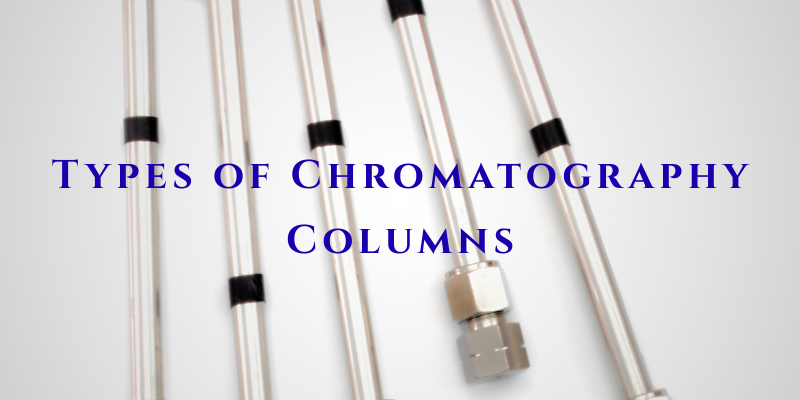Types of Chromatography Columns
Chromatography columns are crucial components in separation techniques, and they vary based on the type of chromatography used. Below are the main types of chromatography columns:
Liquid Chromatography (LC) Columns
Used in HPLC (High-Performance Liquid Chromatography) and UHPLC (Ultra-High-Performance Liquid Chromatography). Common types include:
- Reversed-Phase Columns (RP-HPLC)
- C18 (Octadecyl Silane, ODS): Most widely used, retains non-polar compounds.
- C8: Shorter alkyl chain than C18, leading to shorter retention times.
- Phenyl Columns: Useful for aromatic compounds.
- Cyano (CN) Columns: Provide different selectivity than C18 and C8.
- Amino Columns: Used for carbohydrate analysis.
- Normal-Phase Columns (NP-HPLC)
- Silica-based columns used for polar compounds with non-polar mobile phases.
- Ion-Exchange Columns
- Cation Exchange: Retains positively charged analytes.
- Anion Exchange: Retains negatively charged analytes.
- Size-Exclusion Columns (SEC or GFC/GPC)
- Separate molecules based on size. Used in protein and polymer analysis.
Gas Chromatography (GC) Columns
- Packed Columns: Contain solid support with liquid stationary phase.
- Capillary Columns: Provide higher resolution due to the thin film coating inside a fused silica tube.
Supercritical Fluid Chromatography (SFC) Columns
- Similar to HPLC columns but use supercritical CO₂ as the mobile phase.
Chiral Columns
- Used for enantiomeric separations in pharmaceuticals.
Affinity Columns
- Used in biochromatography for purifying proteins and antibodies.
Common Problems with C18 Columns
Using C18 columns comes with several potential issues:
Column Contamination
- Caused by sample matrix impurities, proteins, lipids, or polymers.
- Results in peak tailing, loss of resolution, and increased backpressure.
Peak Fronting or Tailing
- Often due to improper pH conditions or excessive sample loading.
High Backpressure
- Caused by particle clogging, buffer precipitation, or bacterial growth.
Baseline Drift and Noise
- Due to mobile phase instability, contamination, or detector problems.
Irreversible Adsorption
- Certain compounds strongly bind to the column, leading to carryover issues.
- Other Causes of Contamination (Guard & Main Column)
- Particulate Contamination: Due to unfiltered samples or buffer precipitation.
- pH Instability: Using mobile phases outside the recommended pH range (typically 2-8 for silica-based C18).
- Bacterial Growth: Occurs if aqueous buffers are left stagnant in the system.
- Insoluble Sample Components: Lipids, proteins, or polymeric residues can irreversibly bind.
- Mobile Phase Incompatibility: Incomplete buffer solubility or poor solvent miscibility.
Read also:
- Ways to Extend the Lifespan of C18 Columns & Guard Columns
- Difference Between C8 and C18 Columns
- Difference Between HPLC and UHPLC
Resource Person: Hamideh Mousavi







